
All categories
Featured selections
Trade Assurance
Buyer Central
Help Center
Get the app
Become a supplier

(5125 products available)






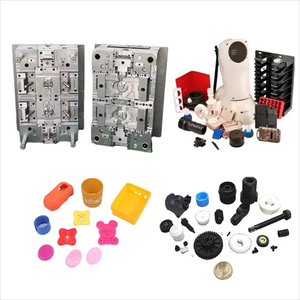

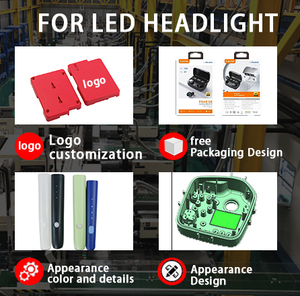





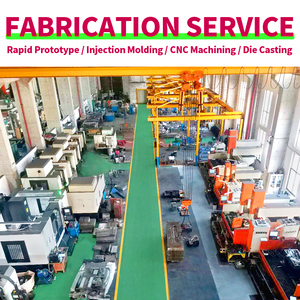










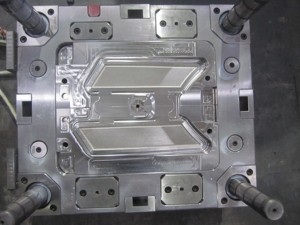












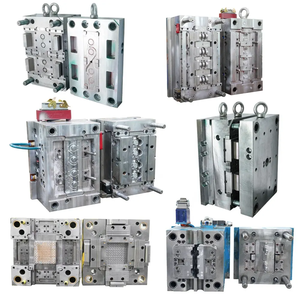







PCB molds are usually required for making printed circuit boards (PCBs). Moreover, the mold helps in precision and durability during the manufacturing process. Below are some common varieties of PCB molds:
Injection Molding PCB Mold
In the injection molding PCB mold, thermal plastic resin is injected into the mold cavity for shaping. This mold is ideal for mass production as it ensures boards are consistently produced in large quantities. Often used for making complex designs with high precision. Such features make it a popular choice for encapsulation and protection of components.
Compression Molding PCB Mold
In compression molding, the plastic material is preheated before being placed in the mold. The pressure then forces the material into the desired shape. This type of mold is suitable for thicker materials and provides a sturdy final product. Also, it is appropriate for applications needing high dielectric strength.
CNC PCB Mold
CNC machines are used to create molds with unmatched precision. The method allows flexibility for small to medium production runs. It is also ideal for custom PCB designs. It is, therefore, a preferred option in sectors that need quick adjustments to the mold.
3D Printing PCB Mold
3D printing has emerged as a feasible tool for prototyping molds. It allows for rapid development with low initial costs. This mold type is commonly used for testing designs before investing in metal molds. It is especially useful in industries where fast innovation is a requirement.
Hybrid Molding PCB Mold
Hybrid molding combines various molding techniques to take advantage of each process's benefits. For instance, it can integrate injection and compression molding in a single mold. It is, therefore, useful in making complex boards that require diverse material properties. This versatility makes it suitable for multi-functional devices.
Various materials are used to make PCB mold. Each material offers distinct advantages based on factors like the design and production requirements.
Steel
Steel alloy, particularly hardened steel, is commonly used for making durable molds. The material's hardness and wear resistance make it suitable for high-volume production. Although steel molds are more expensive than other molds, their long-term durability justifies the initial cost, particularly in mass production.
Aluminum
Aluminum molds are easier to machine. This makes them a viable option for short runs or prototyping. Although less durable than steel, aluminum molds are light, thus reducing production costs, especially in early design phases or when smaller quantities are needed.
Bronze Alloys
Bronze alloys are highly valued for heat resistance and capability to withstand high temperatures. In addition, the alloys have great thermal conductivity, which helps in heating control during the molding process. Often bronze is used in applications like pressure-sensitive adhesives.
Epoxy and Metal Composites
Epoxy-resin composites offer a cost-efficient alternative to metal molds. They are less durable but suitable for low-volume production. Also, they are light and easy to manufacture. This makes them accessible for quick-turn projects or experimental runs. Usually, they come with a silicone mold for easy replication.
2017 Bronze
2017 bronze is a copper-aluminum alloy that’s mainly used in PCB molds due to its excellent wear resistance and machinability. Normally, it can also withstand high temperatures and provides good thermal conductivity. This makes it ideal for applications involving frequent heating cycles.
Selecting the appropriate pcb mold comes with consideration of various factors. Below are these factors:
Material
The material of the mold has a direct impact on durability and ease of production. Steel molds are normally suited for long-term production due to their hardness and precision. On the other hand, aluminum molds are easier to machine and ideal for prototyping. The choice of material depends on the production volume and complexity of the board.
Production Volume
Consideration of production volume needs is critical in making the mold choice. Normally, high-volume production requires durable materials like steel. Conversely, low volumes allow use of aluminum or resin molds, which are more cost-effective. Basically, the volume determines the type of mold that can handle the demands efficiently.
Complexity and Design
The design intricacy of the PCB influences the mold choice as well. Injection molding molds are ideal for making complex designs because of their high precision. Usually, compression molds are suitable for thicker boards. Moreover, selecting a mold that captures all design details accurately helps ensure functionality and performance.
Cost
Budget plays an essential role when choosing a mold. Usually, while steel molds offer longevity, they come at a high cost. Often, aluminum or epoxy molds, despite being cheaper, may require frequent replacements. Frequently, balancing long-term efficiency and short-term costs ensures that the project stays within budget while meeting quality standards.
Lead Time
Apart from production efficiency, lead time is important as well. This is because molds take different times to manufacture, with CNC and 3D printed molds taking longer. Conversely, aluminum molds are faster to produce due to easier machinability. Often, choosing a mold with the right lead time meets project deadlines without compromising quality.
PCB molds offer a multitude of advatages. Below is a list of these advantages:
Enhanced Thermal Management
Normally, PCBs come with better heat dissipation properties compared to other materials. Due to their metal-like polymer texture, they are better at dissipating heat generated by electronic components. This aids in preventing overheating. Commonly, their smooth surface facilitates more efficient airflow. This makes them indispensable in high-performance electronics where temperature control is critical.
Electrical Insulation
Usually, the unique materials used in PCB molds offer superior electrical insulation. This is crucial for maintaining circuit integrity. Normally, bronze and aluminum molds ensure that each layer of the PCB maintains a good separation between conductive pathways. This minimizes the risk of short-circuiting and enhances the overall safety of the device.
Precision and Consistency
Often, PCB molds are engineered to achieve high precision in the production process. This uniformity results in PCBs with consistent quality. Therefore, in industries like telecommunications and aerospace, where the smallest variance can lead to failure, PCB molds play a vital role in achieving strict dimensional accuracy.
Cost-Effectiveness
PCB molds offer a cost-efficient solution to manufacturers. They deal with the expense of producing complex molds by ensuring durability and reusability. Moreover, their efficiency in such high-volume productions reduces the overall cost per unit. This is particularly beneficial in the consumer electronics market, where production costs significantly impact retail pricing.
Versatility in Applications
This mold provides flexibility across various industries. These industries include automotive, medical, and industrial equipment. Normally, their adaptability to different PCB designs makes them suitable for diverse products. Such products normally include smartphones and electric vehicles. Therefore, they support innovation in multiple fields and accommodate evolving technology trends.
A 3D printer can produce PCB molds, particularly for prototyping or small-scale production. 3D printing offers greater flexibility in mold design. It also enables quicker adjustments. This is beneficial in fast-paced environments where iterative testing is necessary. Despite being less durable than metal molds, 3D-printed molds are a cost-effective solution.
Yes, generally, PCBs are highly durable. Often, the durability of a mold depends on its materials. Moreover, it is adapted for production volumes. Steel molds can survive high wear, making them suitable for large-scale manufacturing. In addition, while aluminum molds are less tough, they still handle numerous rounds of prototype effectively.
The factors that influence mold durability include materials, design complexity, and production volume. Construction materials directly impact longevity. Steel molds, for instance, endure more wear than aluminum. For design, intricate molds may wear out faster if not properly maintained. Also, high-volume production can degrade lower-quality molds over time.
Yes, these molds are ideally suited for high temperatures, especially when crafted from steel or bronze alloys. These materials withstand substantial heat without deforming or wearing down. Molds represent an important role in industries like automotive electronics, where components generate intense heat, maintaining their structural integrity.
PCB molds perform different roles in mass production. CNC molds usually offer precision and durability. But they also demand excessive machining time, resulting in a costly process. Whereas steel molds represent a robust choice for high-volume production. They maintain consistent quality and precision over extended runs without significant wear.